Written by KJ Sakura
Over two months have passed since I left Japan and returned home to the San Francisco Bay Area. Little did I know that only 6 weeks later we would face a global pandemic that would change our world as we know it. I am so thankful that I was able to fulfill my dream of visiting Japan before this time of uncertainty. I hope in reading this you can transport yourself to a magical country and enjoy a short respite from our current circumstances.
(To read Part 1 of this article, please click here)
The program I attended was a week-long sake tour hosted by the Wine Spirit and Education Trust (WSET) and the National Tax Agency of Japan. We had an entourage of liaisons and translators who worked together to give us the most informative and satisfying experience possible. My first time meeting the group was a casual evening at the Washington Kansai Airport Hotel’s dinner buffet. We were all jet-lagged, but excited for the adventure that awaited us. After dinner, some of us enjoyed perusing the Family Mart convenience store located on the second floor of the hotel. This store became a nightly obsession amongst a few of us educators. (I’ll admit, I was living off of their tiny sandwiches and ice cream snacks in the evenings. Whoever said Japanese food was healthy??)
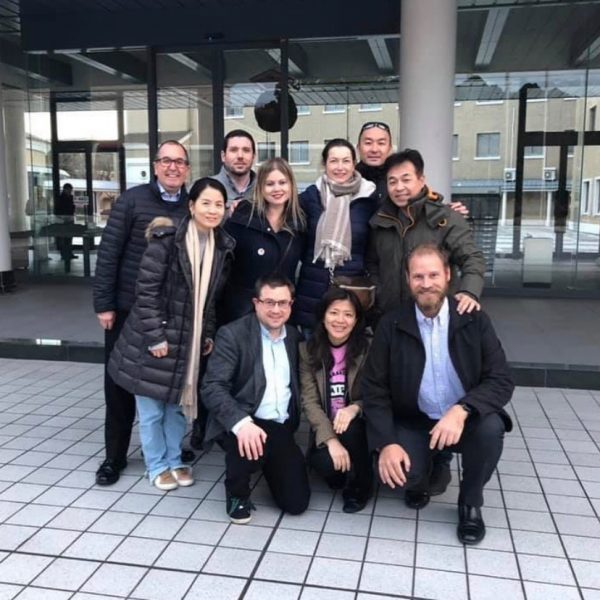
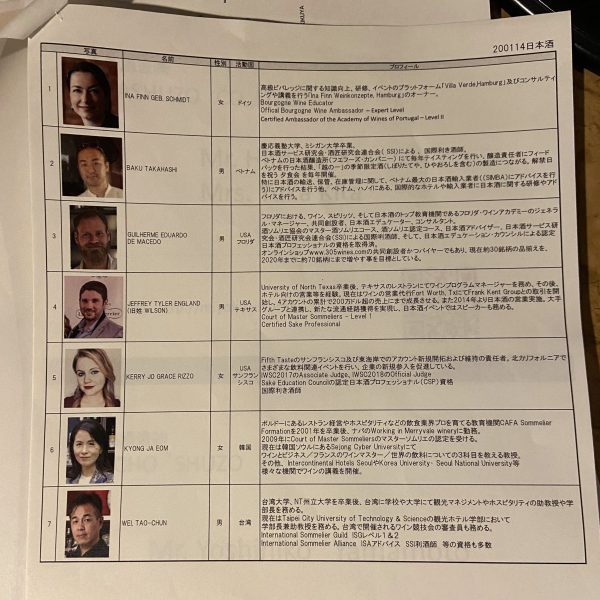
Our first official day consisted of an extraordinary educator seminar led by Natsuki Kikuya and Antony Moss MW. They are the masterminds behind the WSET’s sake education programs Levels 1 & 3. It was truly an honor to spend a full week with the two people who have created the most comprehensive and up-to-date sake education available outside of Japan. The first day consisted of specific instruction and guidance on how to administer the WSET programs. This is the type of training necessary to hold your own classes and become a provider of this coursework.
In the late afternoon we traveled 1 hour by bus to the famous city of Kobe. During the ride, one of our generous mentors shared an unbelievable vintage koshu from 1997. It was called ‘Sachi’ by Kamoizumi Shuzo. It had richness, depth and an infinite finish… exuding aromas of caramelized butter, milk chocolate and miso; making a 2oz pour last 30 minutes. The quality of this beverage was beyond description!
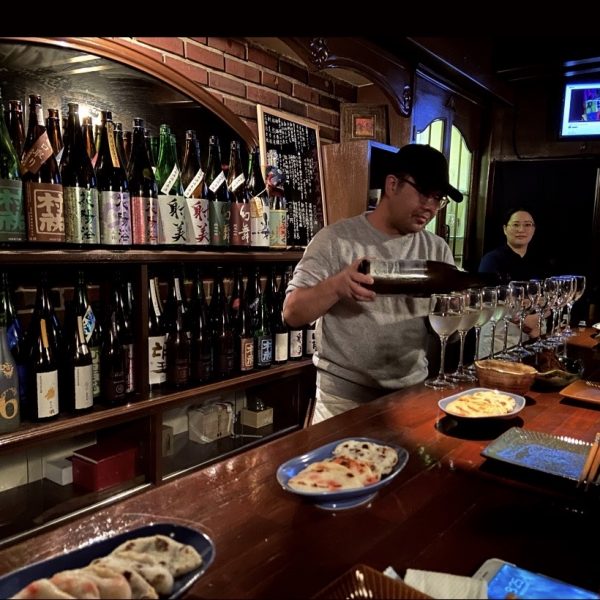
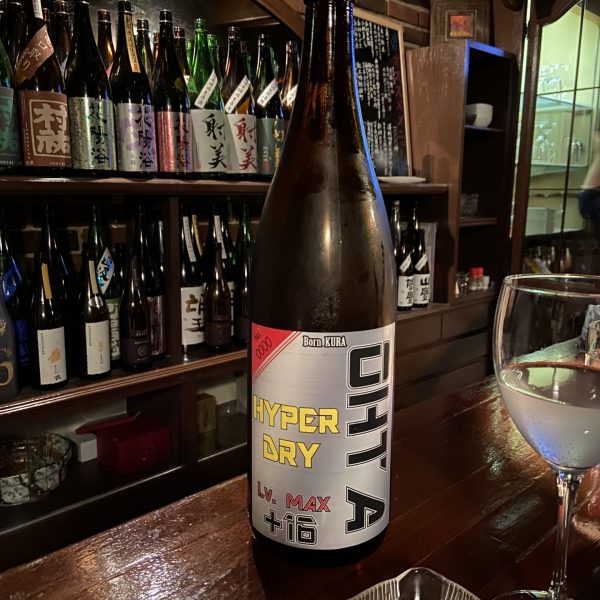
That evening we enjoyed an exuberant array of sake in the tiniest bar I have ever visited called Sasa Seiran. There were just enough seats for our small group of 10. I kept feeling overwhelmed with excitement every time I would see a sake label I recognized. I am unable to read Japanese, but I knew what a lot of them were! Each person tried about 3-4 different sakes which we all passed around and ended up sharing. One highlight from the tasting was revisiting the classic Hanahato Kijoshu (Enoki Brewery @Hiroshima). It had all the obvious characteristics I was familiar with: toffee, cocoa nib, and brown sugar… but was missing a very noticeable aroma that exists consistently in this product in the USA. I have always known this brand’s kijoshu to have an umami-like onion powder character to it. In this bottling which hadn’t gone through the process of exporting, the aroma was non-existent! I have to say, I much prefer the Japanese version. I used to accept this onion-like character as an unusual quirk, but it could very well be defined as faulty, aka ‘hi-ne.’ I tried the Hanahato Kijoshu two more times before I left the country. They were all sultry and pristine with the aromas previously mentioned minus the onion note. This difference in quality is something to consider and watch out for when selling sake outside of Japan.
The next day we spent time at four important breweries in Hyogo. Kenbishi was our first stop. This is one of my ultimate favorite brands of sake! They are leaders of Junmai and Honjozo sake production. I always include Kenbishi sake in my recommendations when someone is new to sake drinking. Kenbishi sake is completely unique and for good reason. They are the oldest brand since 1505 and are known for saying, “be a still clock.” They believe that following trends will cause them to fall behind. They stay true to their traditions and create a “confident taste that customers appreciate.” I will highlight the details of this magnificent three hour brewery tour in a future Sake Tips! article.
Around lunchtime we headed over to Sakura Masamune Brewery and enjoyed a delicious lunch at their restaurant Sakuraen. They served us a lineup of their sakes and a full fish (head and all) to show their appreciation for our visit. It was amazing, but I soon realized I did not have the etiquette skills to properly consume a whole roasted fish. Many people at the table were used to eating this way and did it perfectly with completely clean plates! In comparison, mine was a total mess and I assume a 5 year old could have done better. Even though I was encouraged, I did not eat the eyeballs. C’est la vie!
We had two more tours this day, starting with Kobe Shu-Shin-Kan Brewery aka Fukuju. I have sold their products for quite some time and always feel they are a reliable representation of the region and categories they represent. What affected me the most was their profound commitment to their image and the Fukuju brand. All of the workers had matching uniforms and their facilities were in meticulous condition.
Lastly, we visited the epic Ozeki Corporation, founded in 1711. Ozeki wouldn’t allow us to enter their main brewing floor because they were in the middle of working on competition daiginjo. We did get to see the bottling line for Ozeki One Cup; the original sake cup created in 1964. They also sent us home with some tasty namazake and we took this fun group photo after our tour.
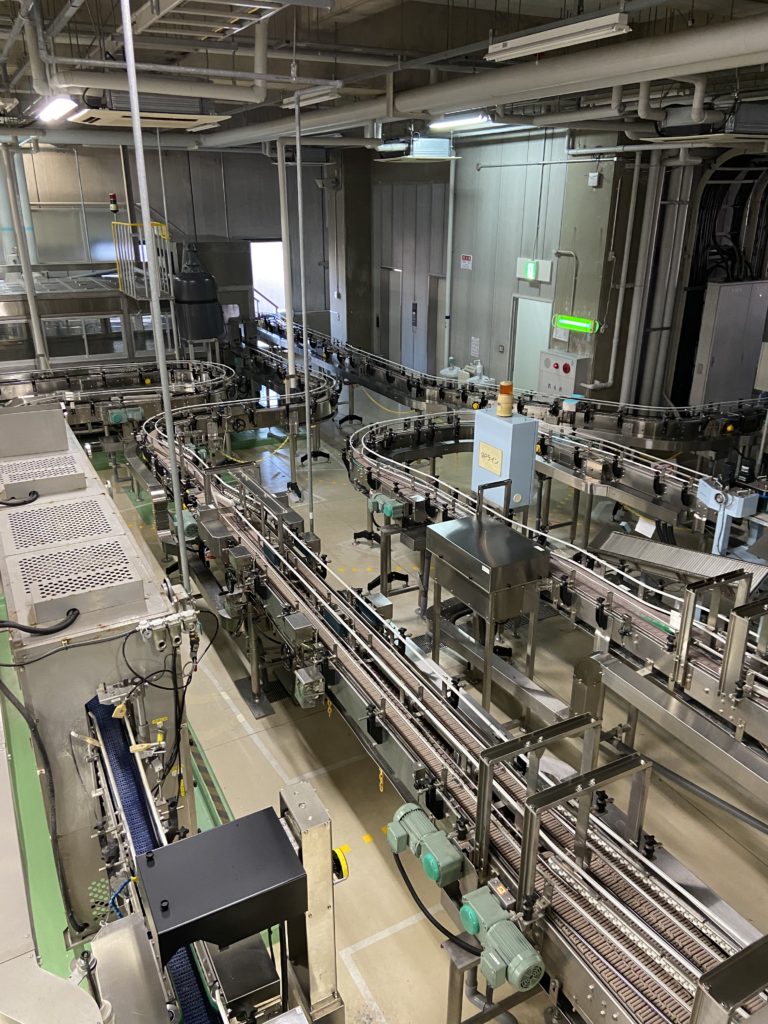
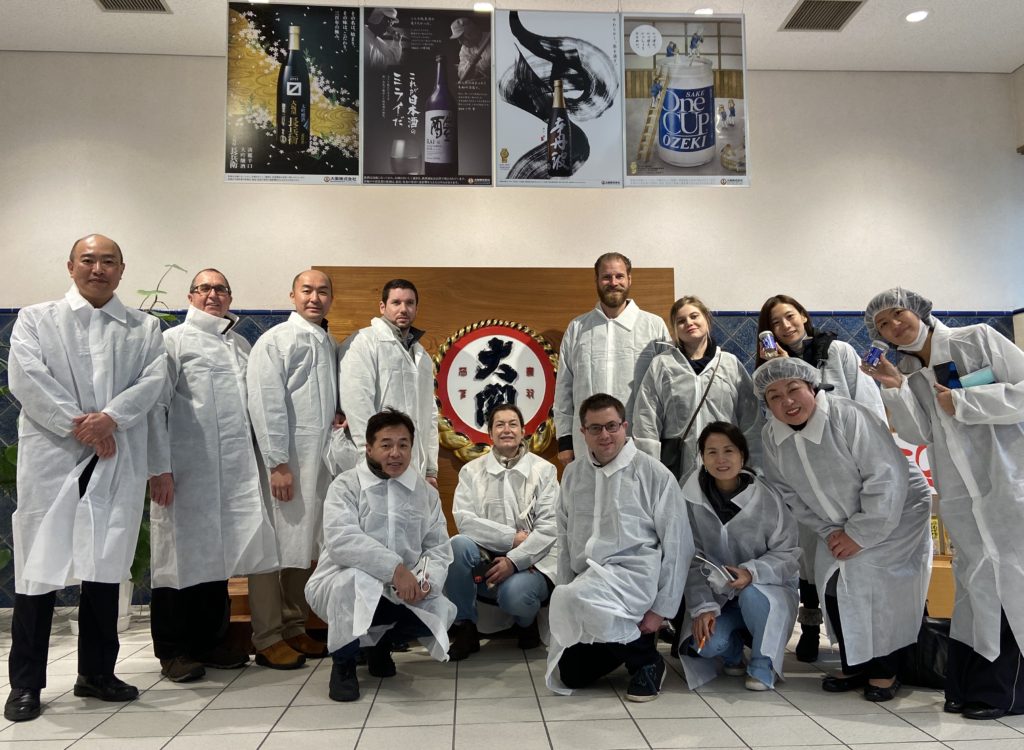
If that doesn’t sound like a full day, imagine having a prestigious dinner with ten brewery presidents hosted in the Sakabayashi room at Fukuju right after! I was so tired, but what an honor it was to enjoy a meal with such influential people. I was excited to see many familiar faces. I had already met half of the presidents during my years at True Sake! This dinner was scheduled on the national holiday, Seijin no Hi or “Coming of Age Day,” where families celebrate young adults turning 20 years old and reaching an age of maturity. All of these powerful leaders of the sake industry changed their plans to spend time with us and to celebrate the furthering of sake education around the world.
The next morning we left bright and early to travel to the region of Nara, the birthplace of modern sake. Nara is famous for developing an ancient yeast starter technique called bodai-moto. Bodai-moto is a sake starter using raw rice and water from Bodaisan Shoryakuji temple which contains very specific natural lactic acid bacteria. Although the temple no longer actively makes sake, they continue to supply shubo to 10 breweries across Nara Prefecture. The lactic acid bacteria from the temple water has also been isolated and is available for purchase as a culture (which is what some other breweries in the region use). Unfortunately we did not visit Shoryakuji, but we did experience two small breweries, Kita Sake Brewing and Imanishi Syuzou as well as Omiwa shrine, the patron shrine of Japanese sake brewing.
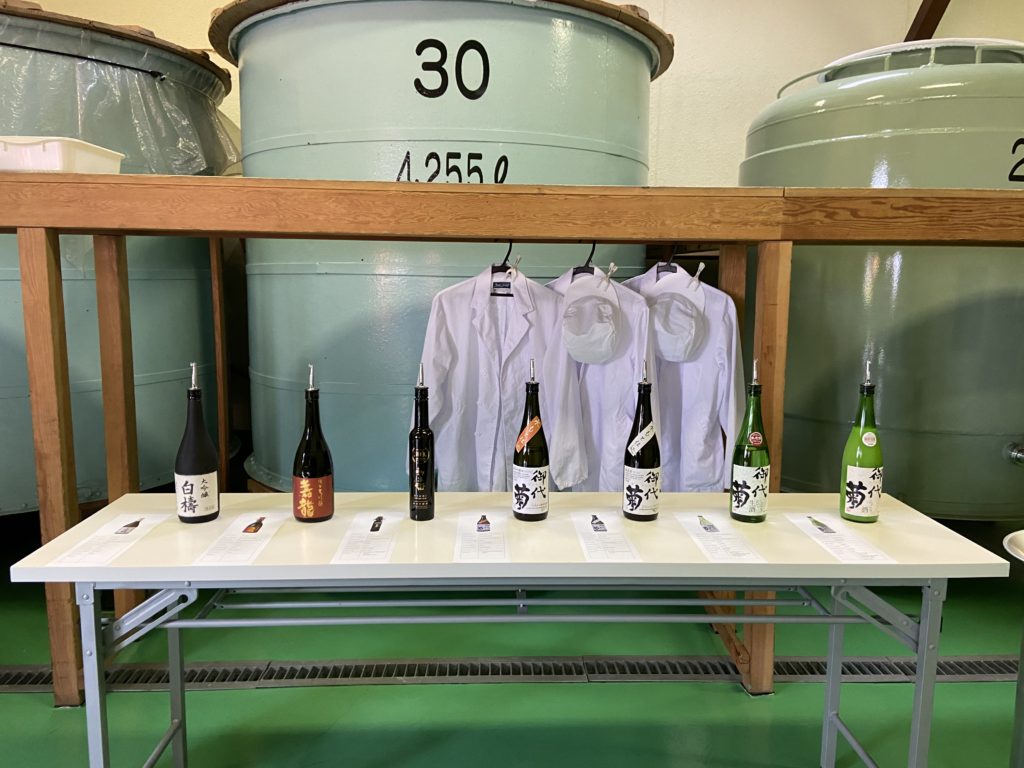
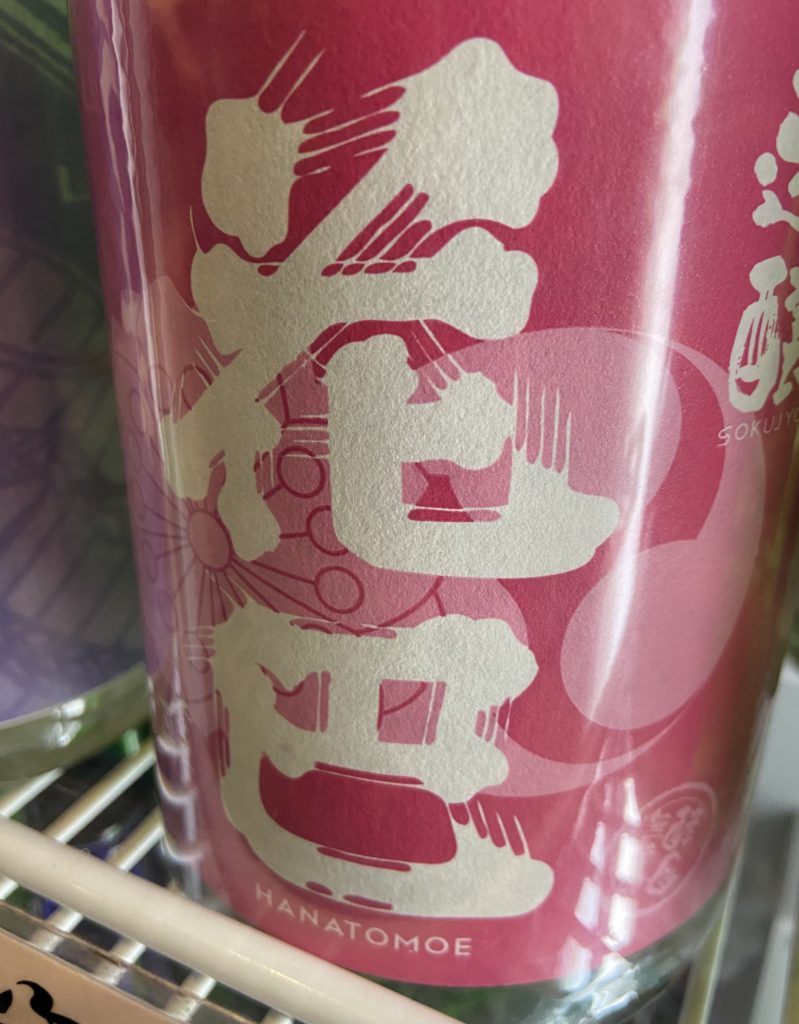
Omiwa pays homage to Mount Miwa on which it stands. Shrines in Japan were a unique experience for me. I was surprised by everyone’s ritualistic and somewhat superstitious behaviors. Offerings of sake and eggs to the kami snake god who resides here is a daily occurrence. The variety of snack stands surrounding shrines are a delight, but again I was surprised. I expected these areas to be quiet and serene, not bustling with activity. I visited a few more shrines during my trip and I really enjoyed the serious, yet light-hearted aspects of Shintoism versus the frightening and severe Catholicism I was brought up with.
We ended the day with another spectacular dinner, this time at a Umasshu, a local izakaya specializing in only Nara sake! I chatted with a few of the brewers from the region and had the pleasure of speaking with Yoshihiko Yamamoto from Yucho Shuzo. His sakes are a hit in the US market and I am lucky enough to represent them through the artisanal sake distributor Fifth Taste. Yoshi-san was the perfect person to guide me through the large collection of sake at our disposal (we were allowed to taste EVERYTHING!). He led me to a couple of his favorites, but one stand out sake was Miyoshino Jozo‘s Hanatomoe Omachi. It had a rich texture balanced with a refreshing acidity and a beautiful aroma of apricots and spice. I wish this sake was available in the US! I would drink it regularly! This was a lively night with boisterous conversation and of course, amazing seishu. The sakes of Nara prefecture are humble, yet powerfully impressive. They all evoke a strong sense of complexity and depth in their flavor profiles. That is due to the history of this region and the bodai-moto technique no doubt.